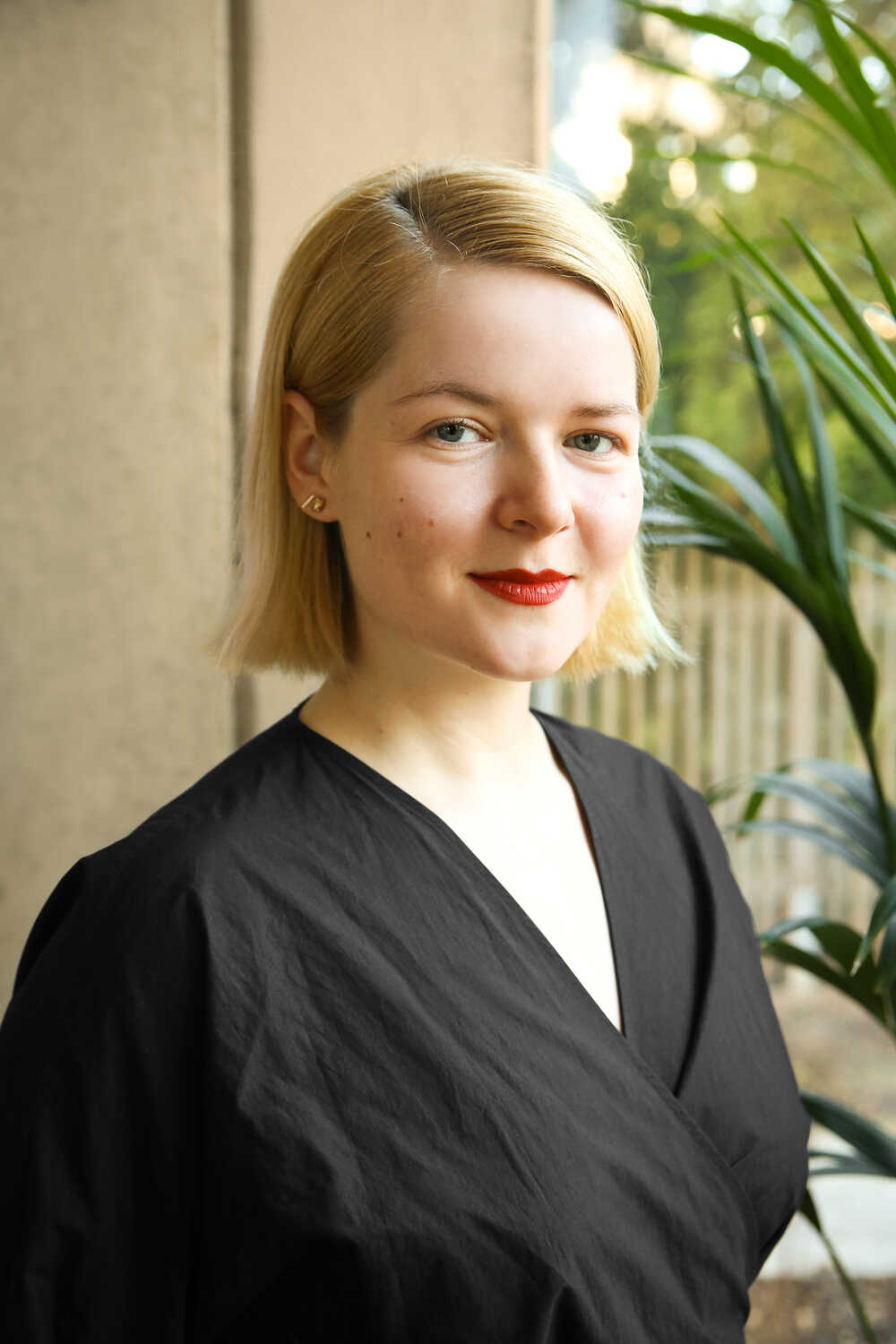Johanna Seelemann
Focused on the ideas of cross-disciplinary design and critical practice, Johanna Seelemann uses adaptable and transformative materials to build a bridge between the industrial and conceptual design fields.
Having graduated in 2019 with her project Terra Incognita which proposed a rethink of the aesthetic value of an industrial clay, the German-born designer has continued to explore a methodology that centres on the investigation of contemporary consumer cycles.
Many of her projects focus on everyday products, proposing alternative approaches that harness circular production methods and more sustainable material compositions. Examples include Banana Story, an ongoing research project highlighting the problems around the demand for non-seasonal goods, and Hortulanus, a series of compostable furniture pieces made from materials that have been familiar to humans for centuries, if not millennia.
Writer, curator and DAE alumnus Tiiu Meiner interviewed Seelemann to find out more about her graduation project from 2019, which was on show at the Intergenerational Graduation Show in Milan in 2022, and what formed her design practice.


→Tiiu Meiner: You work with a lot of local knowledge and materials in proposing alternatives to our current design infrastructures. How did you develop this approach and why do you find it important?
Johanna Seelemann: I think we often think of the design field as one big monolith. We forget how varied the experiences of individual designers can be, based on the differences of the literal locations of where they’re based, or from.
I began my studies in Germany, in Interior Design, and then quickly changed to Industrial Design. During that period I learned a lot of practical skills, but I also always felt either constrained by the preconceived outcomes or lack of conceptual innovation in the education that I was receiving.
Then I went on exchange to Iceland. That really changed my whole perception of design. The geographical restrictions in Iceland really inspired a kind of turning point for me in realising the value of the abundance or scarcity of materials. Actually, it was the scarcity that was the most inspiring, because in Germany everything was always possible. You could always get any material, and any production technique seemed easily accessible, but in Iceland, it was really limited. The education there was also very focused on material cycles and locality and I learned a lot about the concept of substitution. So, instead of importing everything, how can we replace it for example, with a local material? It really made me aware of the whole kind of context of material infrastructures when we’re designing.
→TM: How did this awareness of local material cycles influence your graduation project Terra Incognita?
JS: When I started my graduation project, I chose to work with the car industry, because it’s related to where I come from; Germany. I looked at the whole history of car styling and how it is so driven by aesthetic innovation. I discovered that there’s an industrial plasticine that embodies this idea of constant restyling and innovation that the industry worked with. It’s a material which allows you to seamlessly edit and reform it into a sleek new design, on the spot. I realised it’s really like a micro recycling system. I repurposed this material and its features to make a project that suggested something that was not just about making a car in the end, but about making a proposition for more alternative methods of production that are based on transformative and adaptable materiality.
→TM: You often base yourself in a position that is in-between industries. What do you see your role as a designer being in relation to the industries that you work with?
JS: I think I find freedom in being this outsider towards industries because it means I get to research in many directions without having to fulfil a commercial agenda. I’m not within the industry, so I can think and look at it critically from the outside. I see my role as being somebody who has the freedom to play around with ideas of alternative ways of producing and testing materials that are not yet, or any more, related to industrial production.
But I also want to be clear that I’m not interested in only drawing up negative sides of a certain industry. I’m rather interested in investigating them analytically and historically and understanding how things came to be. How did we get here as a society, and where do we go from here? So for me, a critical lens is really a good tool to get to new and different answers and propositions.
→TM: What’s next for you? How has your practice developed after your graduation and what’s next for you in the bigger picture?
JS: I’m really interested in collaborating, on multiple levels. A lot of my projects exist because I have met someone whose expertise and work have complimented my work, and had a big influence on me. I am also interested in collaborating with companies. I’m very aware that being an outsider and having my own studio that is peripheral to industries also means I need to work on my research somehow becoming incorporated into the fields that I research.
I think my project Hortulanus was also a nice development beyond the Terra Incognita project because I still worked with innovative and transformative styling materials, but this time I got to replace the very artificial modelling clay from the car industry with a more local and sustainable material. I really like how this more low-tech material also activated local knowledge just because it was made of straw and mud that is a very old material. People have known about it for generations, and again, that brings into discussion the local value and origin of materials and production methods that we work with.

